Why is my peace lily drooping? Experts reveal the reasons behind lacklustre leaves and how to revitalise it
There are many ways to bring this resilient tropical plant back to life
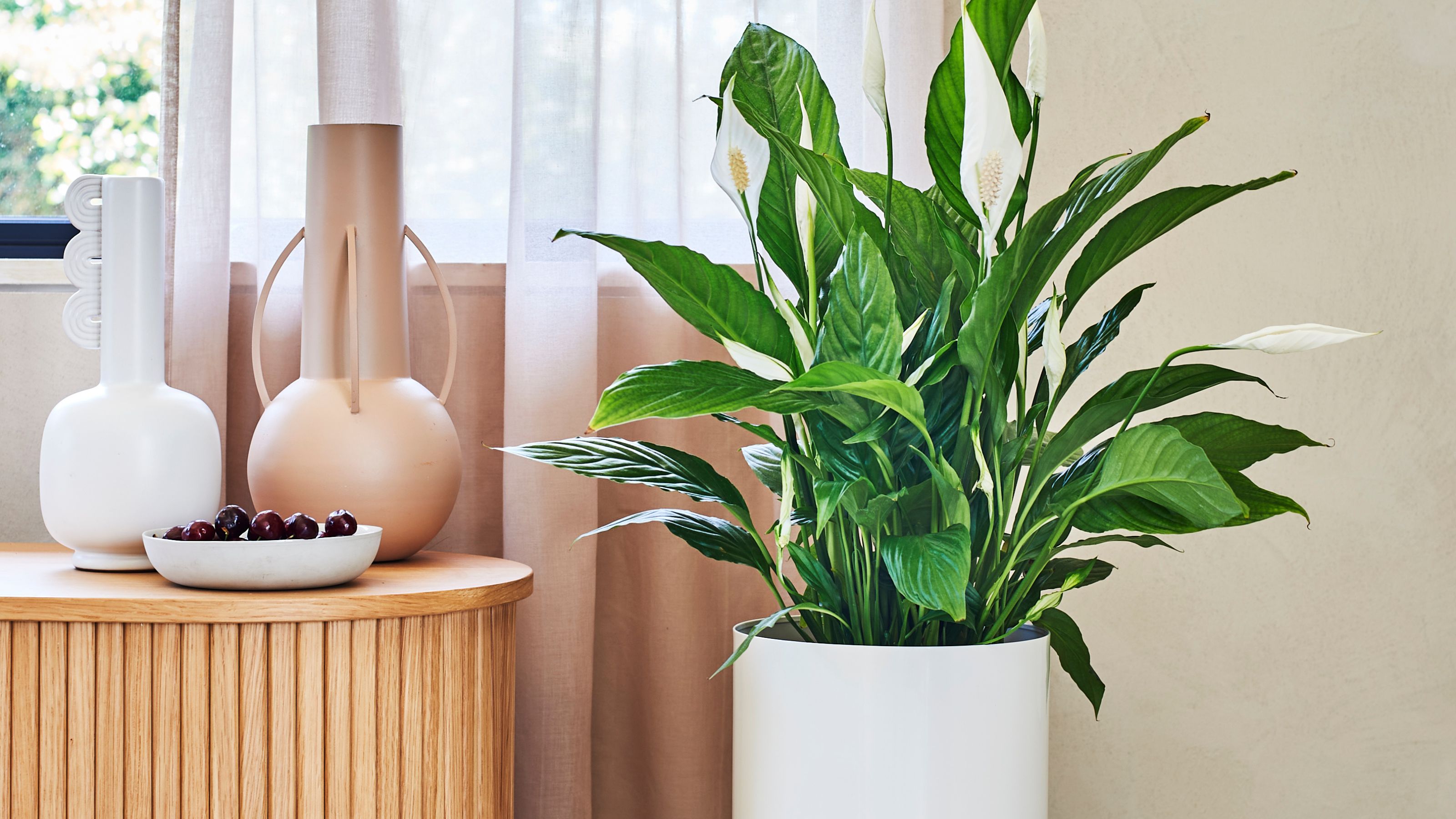
Known for their air-purifying qualities and exotic looks, peace lilies are also a low-maintenance plant, making them a popular choice for many budding houseplant horticulturalists. Yet, despite their easy-going reputation, there are still a number of problems which can arise when maintaining a peace lily. The main being a tendency for peace lilies to develop drooping, lacklustre leaves.
Luckily, peace lilies are also a very resilient and forgiving plant (peacekeeping is in their name after all!), meaning that once you know when and how to care for your peace lily, they should be back in fighting form in no time.
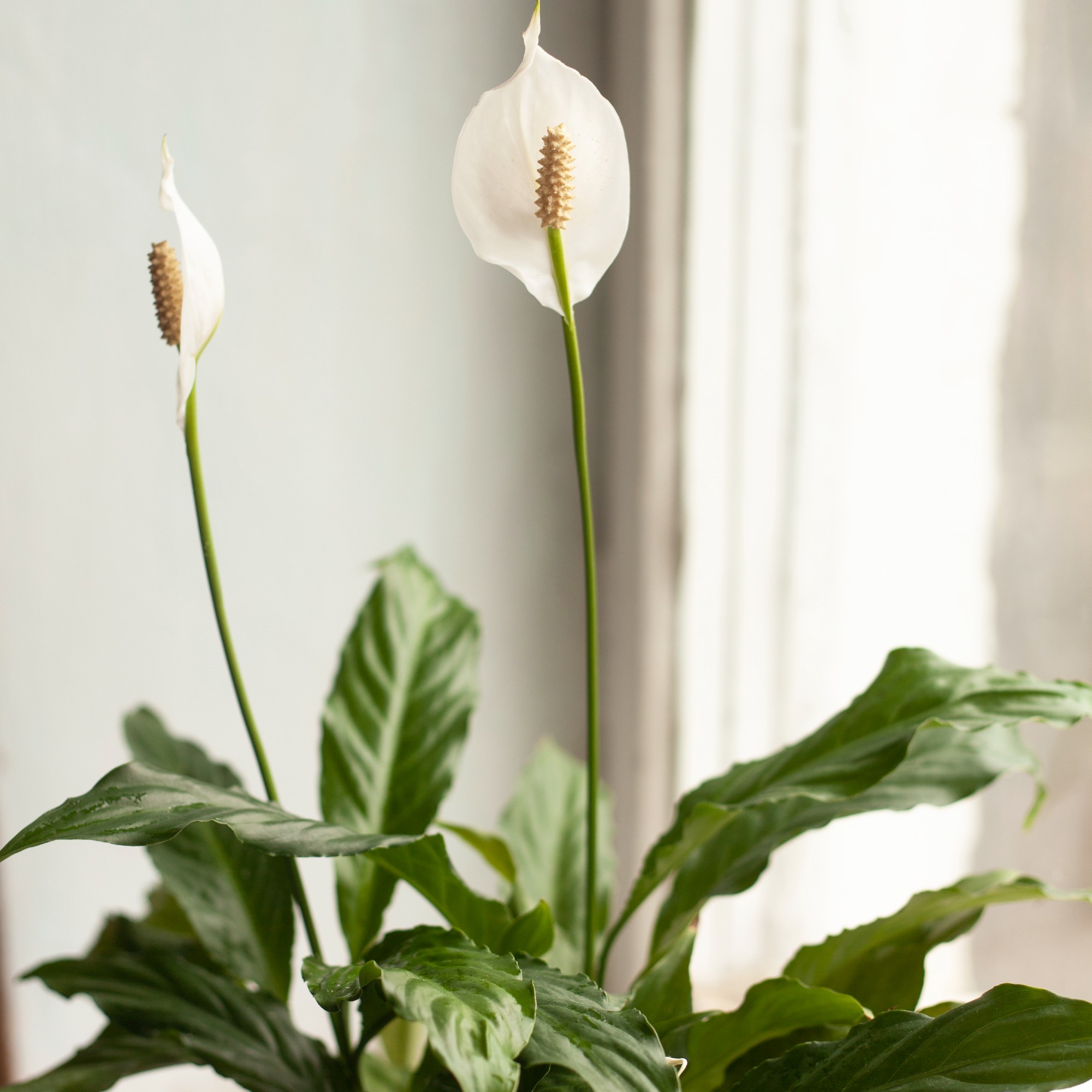
‘Peace lilies can be temperamental, and it’s not always easy to identify why,’ explains Kelly Dyer, the in-house plant doctor at Patch Plants. However according to Kelly, the three most common reasons for a drooping peace lily are underwatering, overwatering and root rot.
The first port of call to revive a drooping peace lily is therefore to test the soil. To do this, Kelly advises to ‘stick your finger into the soil up to the second knuckle. If it comes out at all damp or with slight sticky residue on, then it doesn’t need water yet.’ On the other hand, ‘if your finger comes out completely dry or with dusty residue on, then it’s time for a drink.’
You can also test the moisture level of your soil by the weight of your plant pot. According to Kelly, ‘if it feels super light and ‘empty’ then that means the soil is dry and the plant probably needs a drink. If it has any weight or gravity to it, it’s probably still got moisture in it.’
1. You are overwatering your peace lily
Overwatering is one of the main reasons why your plant may be unhappy, and can lead to root rot. According to Luke Dejahang, CEO of Crown Pavilions, this ‘may show up as yellowing leaves and drooping foliage, an indicator that your peace lily is unhealthy.’
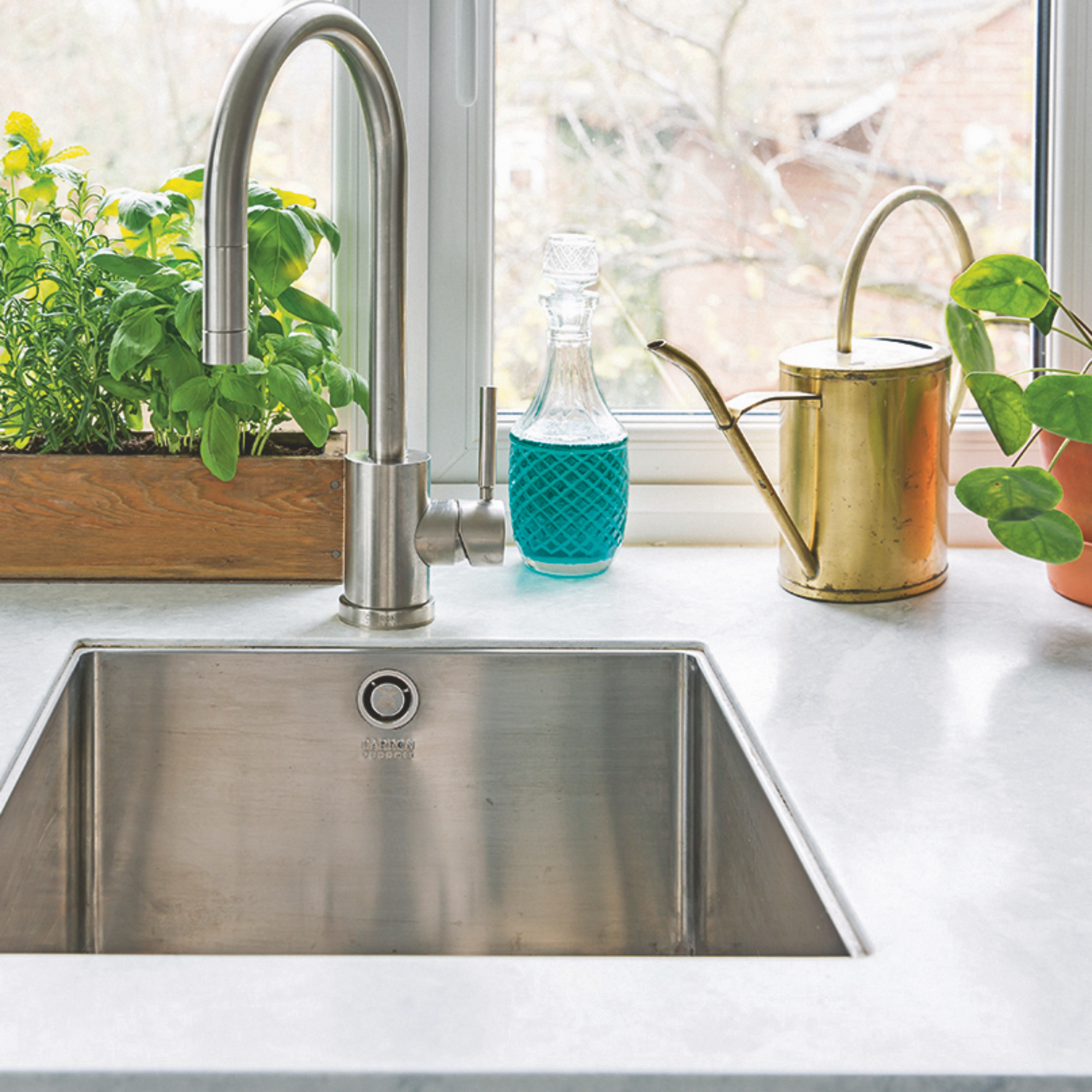
Luckily, you can save an overwatered plant. If your soil still feels soaking a few days after you last watered your plant, Kelly advises to ‘check that there isn’t water sitting in the bottom of the decorative pot. If there is, empty it out and remove your plant from its nursery pot.’ You should then try to soak up as much excess water from the rootball as you can by placing it on some kitchen towel.
After checking root rot hasn’t set in (the tell-tale signs are soft brown mushy roots and bad-smelling soil), you can re-pot your plant and start again. Kelly then advises to not water again until the soil is nearly completely dry.
The amount of water your peace lily needs also depends on the time of year. In winter, peace lilies require less watering than during the growing season (March to October). During winter, ‘it is generally sufficient to water every two weeks, as they are in a slow-growing period,’ says Luke.
It's worth regularly checking your soil during this period, as regularly having the heating on during colder weather can dry out your soil faster and affect how often you need to water your plant. To err on the side of caution, Luke advises: 'Always check the soil before watering; the top few centimetres should be dry as this is your sign for when it is the right time to know when to water.'
2. You are underwatering your peace lily
Another common cause for a drooping peace lily is underwatering. ‘You’ll soon know if your peace lily needs watering as it will droop quite dramatically, but a good soaking will soon liven it back up,’ says Holly Clancy, assistant brand manager at Westland Horticulture.
‘Peace lilies really dislike drying out, so keep them moist, and stand on a pebble tray to prevent it becoming too waterlogged.’

3. It needs repotting
It’s also worth considering whether your lily isn’t absorbing water because it needs new soil. ‘If the soil has become completely hydrophobic and contracted in from the insides of the nursery pot, when you water your plant, the water just runs straight through rather than being soaked up,’ explains Kelly.
Repotting your plant with and refreshing its soil is an easy way to resolve this. As a rule, peace lilies should be repotted every 2-3 years, and spring is the best time of the year to repot a houseplant to settle into its new pot.
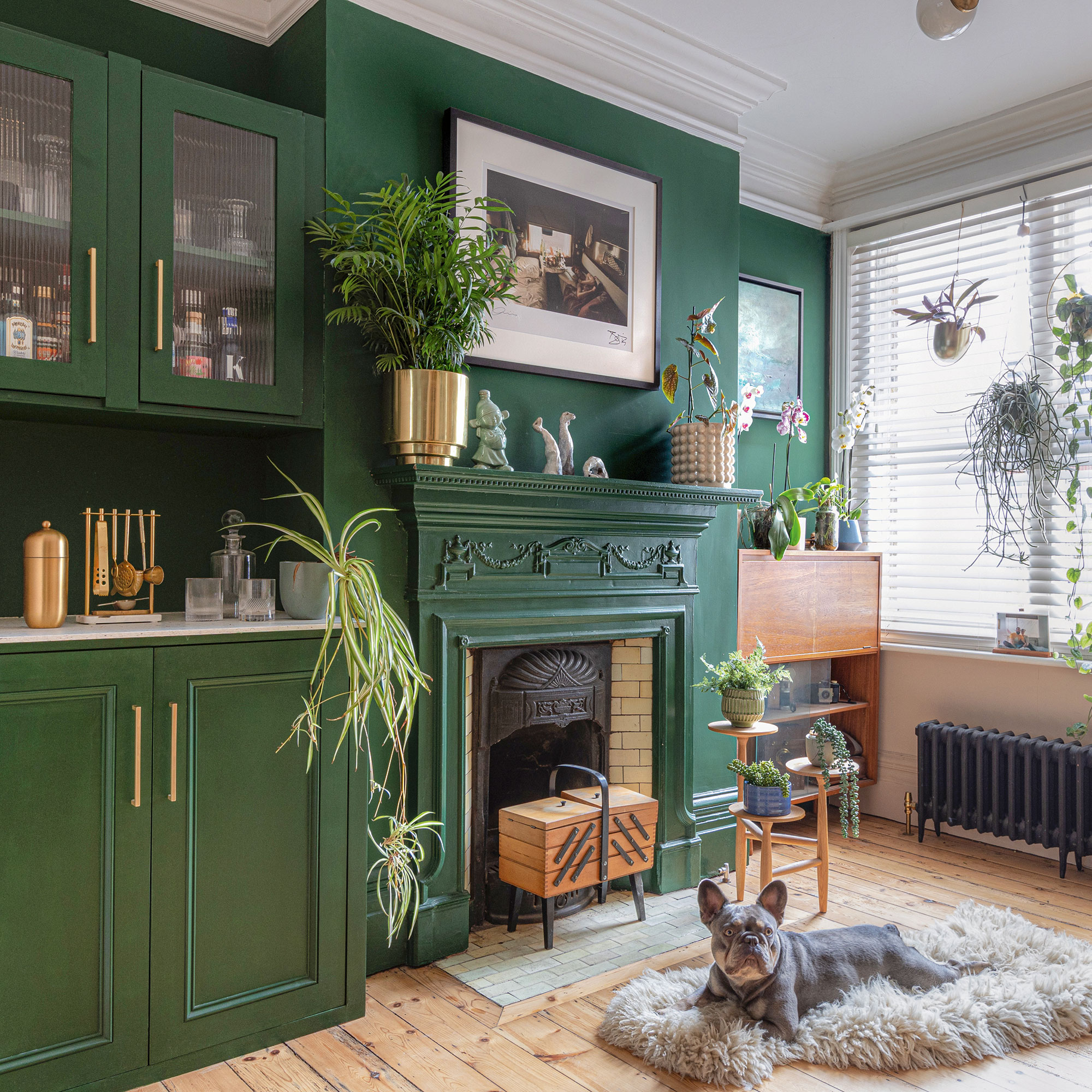
4. It’s in the wrong temperature
Despite being generally fuss-free to maintain, one thing peace lilies are particular about is where they are placed inside the home. Too cold, and the plant experiences temperature shock, which can contribute to droopy leaves. But this doesn’t mean you should let your plant get too warm, as too much heat will reduce the humidity in the surrounding air, leading to dried-out, lacklustre leaves.
To avoid a drooping peace lily, choosing the perfect place for it is crucial. 'The number one place to avoid keeping peace lilies in winter is near cold drafts or near heat sources, such as radiators and fireplaces,' explains Luke. ‘The most important factor to get right is maintaining a stable temperature. Peace lilies thrive in temperatures between 18°C to 27°C, which is slightly higher than the ideal temperature you should have for your home.’
‘You should aim to keep your peace lily in a consistently warm environment that has no huge temperature fluctuations,’ adds Luke. ‘This is crucial to prevent any form of additional stress and temperature-related damage to your peace lily.’
5. It’s not getting the right amount of sunlight
If your peace lily is in a dark room with little sunlight, this could be the reason for its lacklustre leaves. These plants prefer bright, indirect light, so keeping them somewhere with a lot of light like next to a window should keep them happy, as long as they are out of direct sunlight.
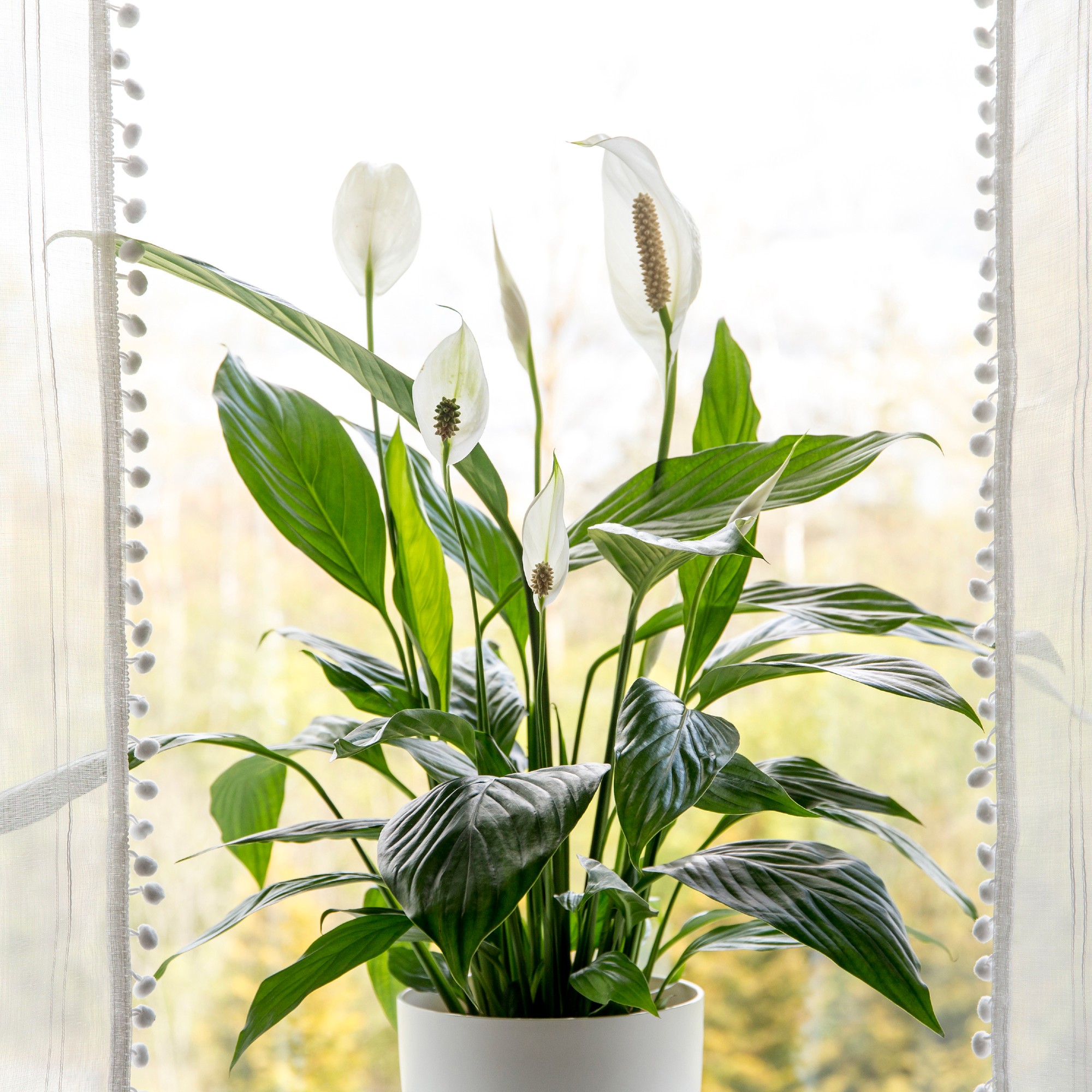
6. It’s not in an environment with the right humidity
It’s also important to consider the humidity of the room your peace lily is housed in, as they prosper in a relatively humid environment of around 50-60%. ‘Keeping it in a humid room such as a bathroom or kitchen provides an ideal environment for a peace lily to thrive,’ recommends Luke – just so long as there’s enough light in the room.
FAQs
What does an overwatered peace lily look like?
Kelly Dyer, Patch Plants’ in-house plant doctor, says the signs to look for if you’re worried about overwatering your peace lily are:
- Droopiness
- Yellowing leaves
- Soft brown patches on leaves
- Soft, rotting (potentially mouldy) stems
- Soaking wet soil
- Potentially smelly soil
How long does it take for a peace lily to perk back up?
Depending on the severity of the situation, if you follow the advice above, your peace lily should perk back up within a couple of weeks. If it was just the case that it needed more water, it could come back to life within even a few hours.
Get the Ideal Home Newsletter
Sign up to our newsletter for style and decor inspiration, house makeovers, project advice and more.
You must confirm your public display name before commenting
Please logout and then login again, you will then be prompted to enter your display name.
-
 This £200 limited-time discount makes this Dyson vacuum cheaper than I’ve ever seen it - run don’t walk to Argos for this bargain
This £200 limited-time discount makes this Dyson vacuum cheaper than I’ve ever seen it - run don’t walk to Argos for this bargainIt's the most affordable Dyson on the market right now
By Lauren Bradbury
-
 Martin and Shirlie Kemp’s pastel flower beds has given their Victorian renovation a romantic look - how you can get the look
Martin and Shirlie Kemp’s pastel flower beds has given their Victorian renovation a romantic look - how you can get the lookTheir pastel garden is the cottage garden inspo you've been looking for
By Kezia Reynolds
-
 7 outdated rules to ignore when designing a small patio – experts say ditching them will transform your space
7 outdated rules to ignore when designing a small patio – experts say ditching them will transform your spaceThese are the traditional patio design rules you don’t always need to follow
By Rebecca Lawton